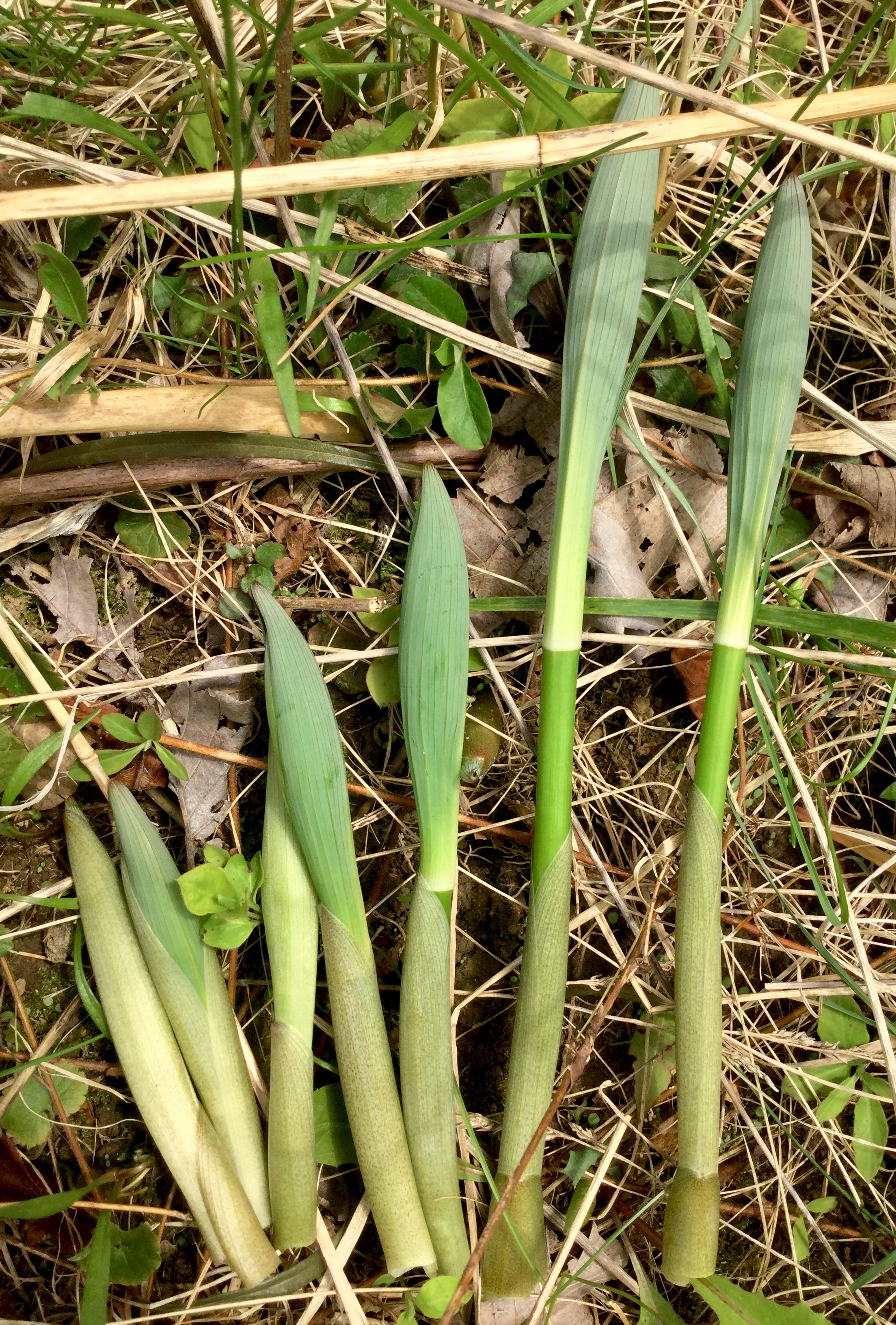Hosta are ubiquitous to the flowerbeds of the world as any plant you can imagine. While some take sun with less complaint than others, many are misplaced in sunny positions, and run ragged because of it. They are really shade plants, preferring a fertile understory of trees.
Solomon’s seal (Polygonatum biflorum) is harder to find, but can live on even less sun than hosta and still be happy.
Both are edible. “Urui” is the vegetable name for hosta where it’s eaten in Asia. The young “hostons,” as some forest gardeners call the plants just coming up in spring, are best for eating. As the leaves unfurl they are still edible, but become more tough and stringy as the season unfolds.

Solomon’s seal too, is best when sprouting in spring. The leaves have a slightly bitter element; which personally I don’t mind, but others may prefer omitting by stripping the leaves from the stalk. It’s the stalk itself that has the really good flavor, which is hardly different from asparagus -with the umami richness kicked up a notch.

This makes a lot of sense if you consider how closely solomon’s seal is related to asparagus. They are both in Liliaceae -the Lily family.
I’m harvesting both hosta and SS from parts of the food forest that are in dappled sun now, but will have little to no light once the trees leaf out. Asparagus, which as a rule prefers sun, is just showing up to the party as these two are just passing their prime. Few annual garden crops are even planted now, let alone ready for harvest to fill the “hunger gap,” but these two are shooting to the sky, ready to be crisply snapped off their stems, and sauted in the skillet.
They’re simple to prepare: “hostons” may be sliced in half lengthwise.
Solomon’s seal I leave whole. You could peel off the leaves to remove any possibility of bitterness. Just snapping their stems at ground level I have not found any hard bases like asparagus, so no chopping necessary.

Once prepared, heat oil of choice in a pan, and add the shoots. I flavored these pictured with some pepper, fish sauce, and vinegar to compliment the bitter element. You may prefer to omit the vinegar if the leaves are removed from the Solomon’s seal. Once tender, they’re ready for the plate.

I got my Solomon’s seal in a trade online with the understanding they were giant Solomon’s seal (var. comutatum), and certainly appreciated getting twenty or so rhizomes freshly dug. They have not achieved the height my neighbor’s specimen achieve every year though; mine stay around three feet, hers shoot to six easily. So I think there was a misunderstanding. I may get some of the larger kind in the near future.
As for variance in hosta, I can’t vouch for the quality -especially when it comes to the hybrids. My neighbor is a formidable collector of hosta, and has even brought me with her to purchase direct from hosta breeders; so the fact that there are myriads of hosta, with crazy exotic chemical attributes and textures out there is real in my mind. Usually the blue, and dark green varieties are best for eating. In this dish, I prepared H. nigrescens, and ‘Sum and Substance’ (a hybrid of unknown parentage), both of which aren’t too rare. These are mostly the throwaway hostas from my neighbor’s massive collection -seedlings that have no name, and extras.
Thriving in the dark corners of the food forest, these two are making food, and beauty, in places little else would grow.




Oh! Thanks for the reminder! We ate them last year and loved them!
LikeLike
I remember you mentioning that last year. You flavored them with a little soy sauce I think? We need to get a patch of SS in your yard ASAP though. You’d love it!
LikeLiked by 1 person
Fascinating! When I moved into my current home it was just a flat lot covered with tumbleweed, and it took time to get enough fruit trees to grow to have any shade. So, my first hostas only went in last year. This year I was very tempted by the shoots but decided that the plants were not established enough yet to break any off. Delighted to hear about your experience. Would you be willing for me to re-blog this on my blog?
I have been considering buying some Solomons seal and wondering whether it was worth the expense, and now I am thinking that I will try a patch.
LikeLike
They really do prefer a more mild climate, so good move waiting to try planting them.
You are of course more than welcome to reblog this post. I’m flattered by your asking. If you would like the original, I would be more than happy to provide it for you. Just let me know.
LikeLike
Now, can I bear to part with my hostas (i.e. if I dig up the shoots, I won’t get any pretty leaves or flowers)? I am intent on getting more hostas – just need to source them.
Enjoy your hosta delight!
LikeLike
It does take off the developing flowers to cut or snap the shoots off at ground level. They keep sprouting up and make some leaves though -if blunt ended sometimes. I cut a lot of hosta leaves over the summer for bouquets though, and they are usually fine with mild nipping that doesn’t use more than a third of their leaves. I look forward to seeing how it works out for you.
LikeLike
I’m not sure I’m going to try – maybe when I have more hostas 😊.
LikeLike
Ohh- I just planted Solomon’s Seal in one of my hedgerows this spring! I’ll have something to look forward to next year,
LikeLike
Good for you! Hope you like yours as much as I did mine.
LikeLiked by 1 person